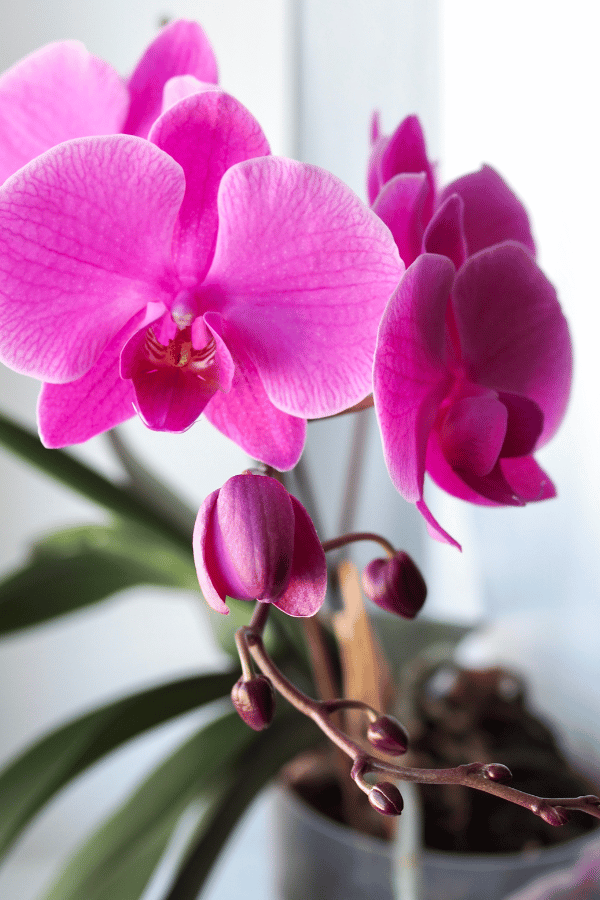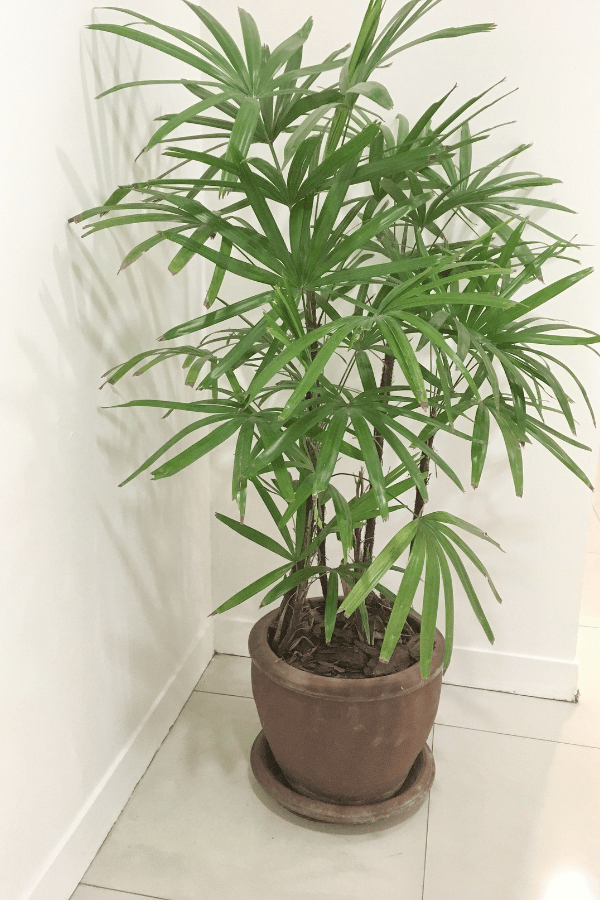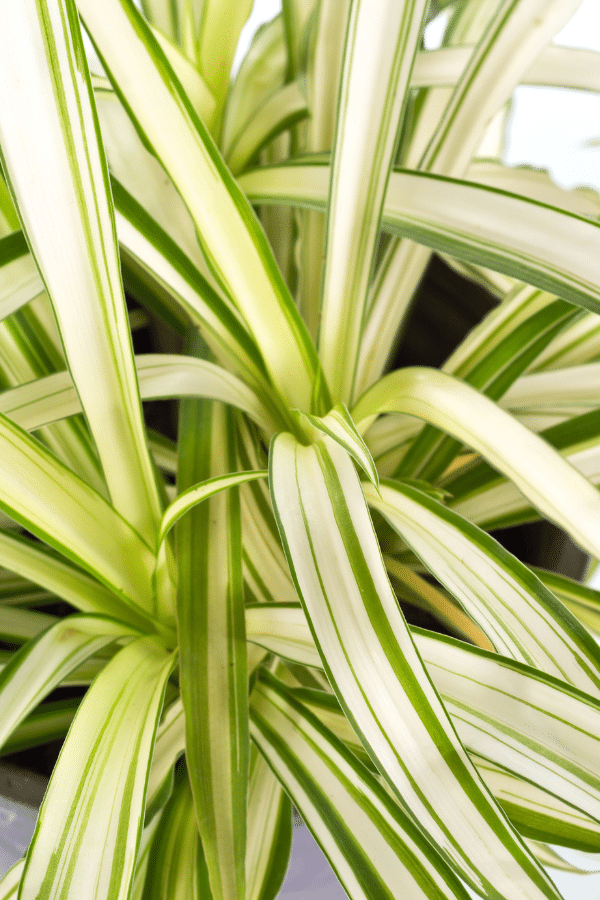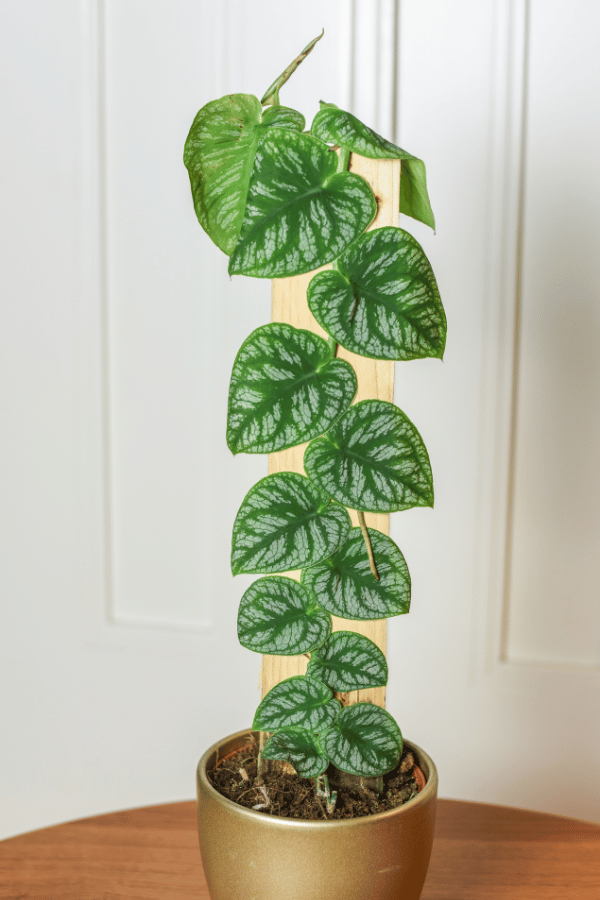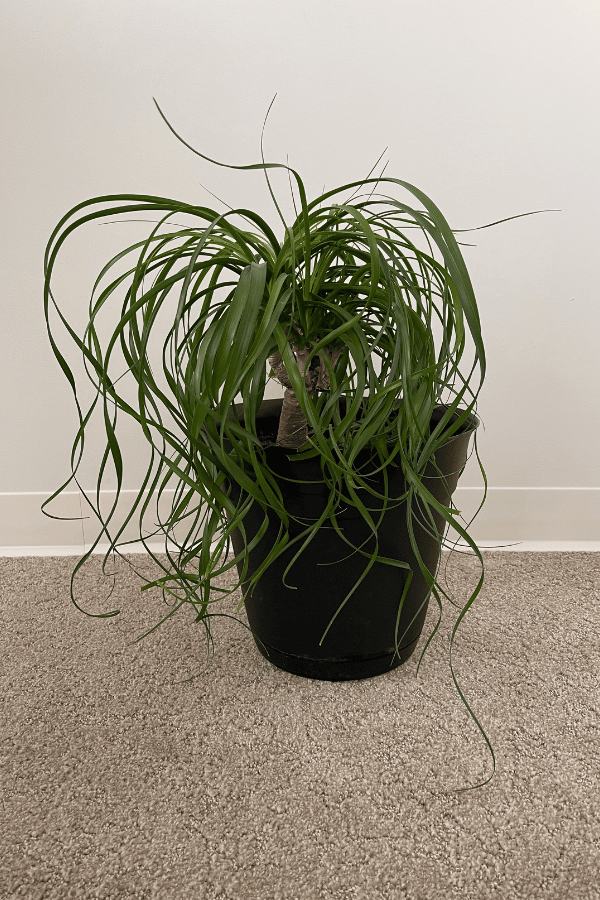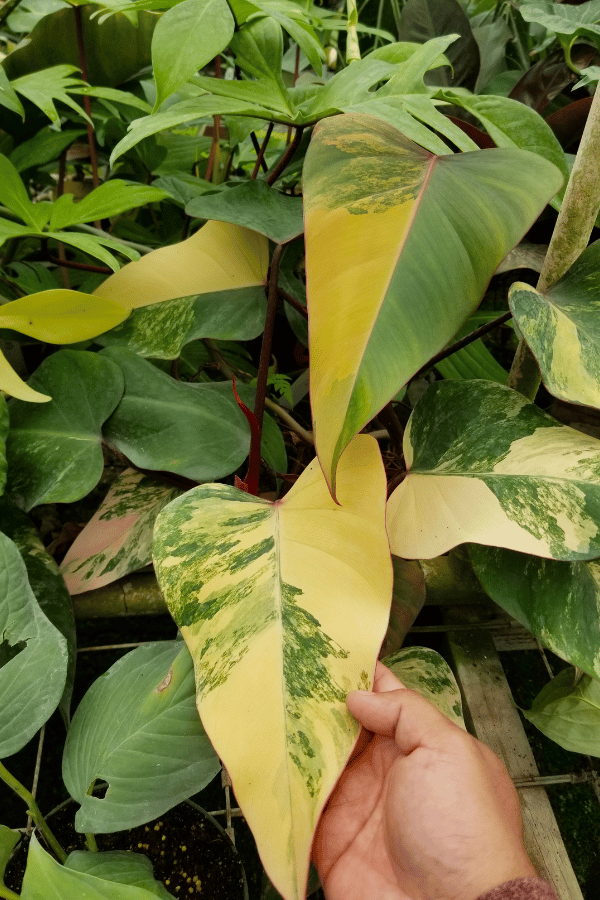Alocasia Odora
Scientific Name: Alocasia Odora
Common Name: Giant Upright Elephant Ears
Alocasia Odora care is an easy Alocasia to grow and care for. If you want a houseplant that can get real tall and give a tropical forest vibe, an Alocasia Odora plant may be for you.
To give this Alocasia plant the best care, it requires water-retentive well-draining soil, keep the soil moist, provide it with bright indirect sunlight, temperatures ranging from 65-80F, and average to high humidity levels.
Quick Care Overview
| Common Name | Giant Upright Elephant Ears |
| Scientific Name | Alocasia Odora |
| Family | Araceae |
| Origin | Southeast Asia |
| Growth Rate | Medium |
| Identification | Glossy heart-shaped green leaves with green veining |
| Height | Up to 8 feet tall |
| Soil | Water-retentive, well-draining soil |
| Water | Soil likes to remain consistently moist |
| Temperature | 65-80F |
| Sunlight | Bright indirect sunlight |
| Toxic to Cats & Dogs | Yes |
| Toxic to Humans | Yes |
| Pests | Scale, spider mites, aphids, and mealybugs |
| Diseases | Root rot |
Below we will dive deep into this Alocasia Odora care guide.
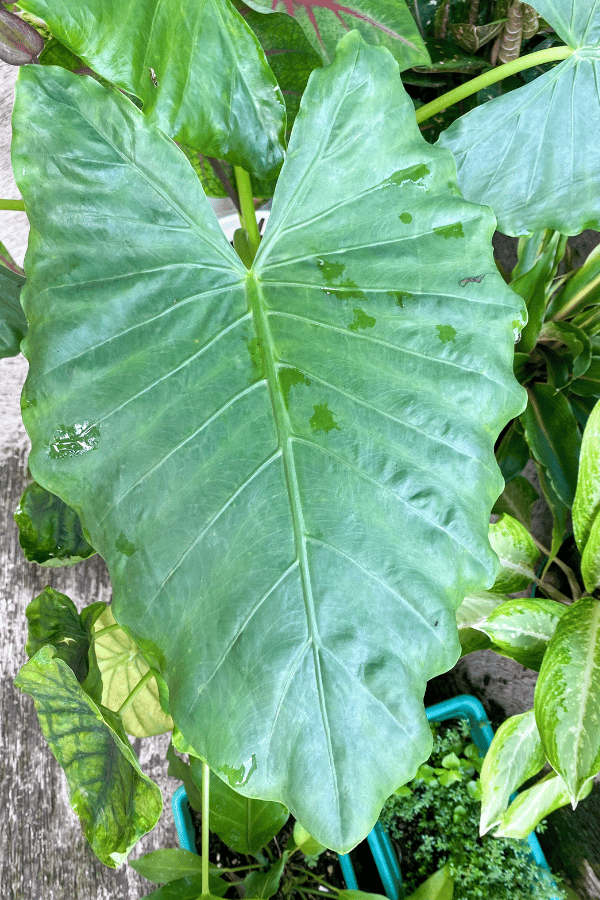
Alocasia Odora History
Southeast Asia native Alocasia Odora is a gorgeous perennial tropical plant related to the edible taro root plant. Known for its large arrow-shaped leaves, this plant is also known as the giant upright elephant ear, Asian taro, or night-scented lily.
Alocasia Odora Identification
Large, heart-shaped, glossy, green foliage presents on rigid stems. Resembling an elephant ear, individual leaves can grow up to 3 feet long. The spathe and spadix of this Alocasia comes in a pale peach shade. These plants may bloom from late spring to early summer and have a lovely scent that becomes more prominent at night.
Alocasia Odora Growth Facts
This large plant with lush foliage can grow quite large. Ensure that you provide it with plenty of room to grow.
How Big Does an Alocasia Odora Get?
When cultivated indoors, Alocasia Odora may grow up to 8 feet tall by 4 feet wide
Alocasia Odora Care
This lovely low-maintenance plant is perfect for anyone wanting to add a tropical accent to any room.
Alocasia Odora Soil
Alocasia Odora will thrive in a water-retentive, well-draining, rich soil. You may make a perfect soil mix by combining commercial potting mix with compost, peat moss or coco coir, and perlite.
Alocasia Odora Fertilizer
Alocasia Odora, being a large, quick-growing plant, will benefit from a feeding biweekly during the warm growing season of spring and summer. Select a balanced, liquid fertilizer indicated for houseplants and dilute to 50%. Feed from March to September. Do not feed during the late fall and winter. Ensure that you do not overfeed, as this may lead to excess salt buildup in the soil, which may cause damage to your plant due to fertilizer burn.
Alocasia Odora Watering
Alocasia Odora likes to remain consistently moist but not oversaturated with soil. Rewater your Alocasia after the top 2-3 inches of soil has dried. Watering frequency should be reduced in late fall and winter during dormancy.
Alocasia Odora Light Requirements
Alocasia Odora will grow best if kept in bright indirect light, such as from an eastern-facing window. While this Alocasia plant may tolerate lower light conditions, it will cause growth to slow down, foliage to become smaller, and leaves to become lighter in color. Alternatively, too much direct sunlight will lead to leaf scorch.
Alocasia Odora Temperature & Humidity
As a tropical plant, Alocasia Odora will like to remain in a warm and humid environment. Alocasia Odora prefers to be kept between 65-80 degrees. You may aid the growth of your plant by increasing the humidity level of its growing environment. This may be done by installing a humidifier or pebble tray.
Repotting Alocasia Odora
Alocasia Odora will not need to be repotted often. It does not like to be moved and wants to remain slightly rootbound. However, it is time to repot when roots are seen coming out of the drainage holes. When selecting a container, choose a pot that is around 2-4 inches larger than the previous container. Repotting should ideally be done in early spring. Propagation can quickly be done at the same time. To repot, remove the plant from its container, minimally touching the roots. Insert the root ball into the new container, refresh the soil, tamp slightly, water thoroughly, and place in indirect light.
Alocasia Odora Maintenance & Pruning
Periodically, you should maintain the aesthetic of your Alocasia plants by removing any damaged, discolored, or dead leaves using sharp, clean shears.
Alocasia Odora Propagation
Alocasia Odora may be easily propagated through rhizome division. It is best to do propagation in spring while repotting. Remove the mother plant from its container and separate tubers from the mother plant to propagate. Tubers should be separated and placed into their own container. Water the newly planted plantlets thoroughly and place them in indirect light in a warm environment.

Alocasia Odora Toxicity
Toxicity to Humans
Alocasia Odora is considered toxic to humans due to its calcium oxalate crystal content. Therefore, although this plant is related to the edible taro, Alocasia Odora should never be consumed.
Toxicity to Cats & Dogs
Alocasia Odora is considered toxic to pets and should not be ingested. However, if you suspect your pet has consumed any portion of this plant, contact your veterinarian or animal poison control immediately.
Alocasia Odora Problems
Alocasia Odora Leaves Turning Yellow
When the foliage of Alocasia Odora turns yellow, it is often due to overwatering. Ensure that you do not overwater your Alocasia and that you do not allow it to sit in standing water within its drainage tray.
Alocasia Odora Leaves Turning Brown
The number one cause of browning foliage, when it comes to Alocasia Odora, is lack of humidity or moisture. Alternatively, browning foliage may be due to too intense direct sunlight, causing leaf scorching.
Alocasia Odora Diseases
As Alocasia Odora loves humidity and moisture, bacterial and fungal issues can become an issue. Therefore, ensure that you do not overwater your plant.
Alocasia Odora Pests
Alocasia Odora may become susceptible to several indoor houseplant pests, such as aphids, scale, mealybugs, and spider mites. Isolate your plant and treat it with a pesticide such as neem oil or insecticidal soap upon identifying an infestation.

